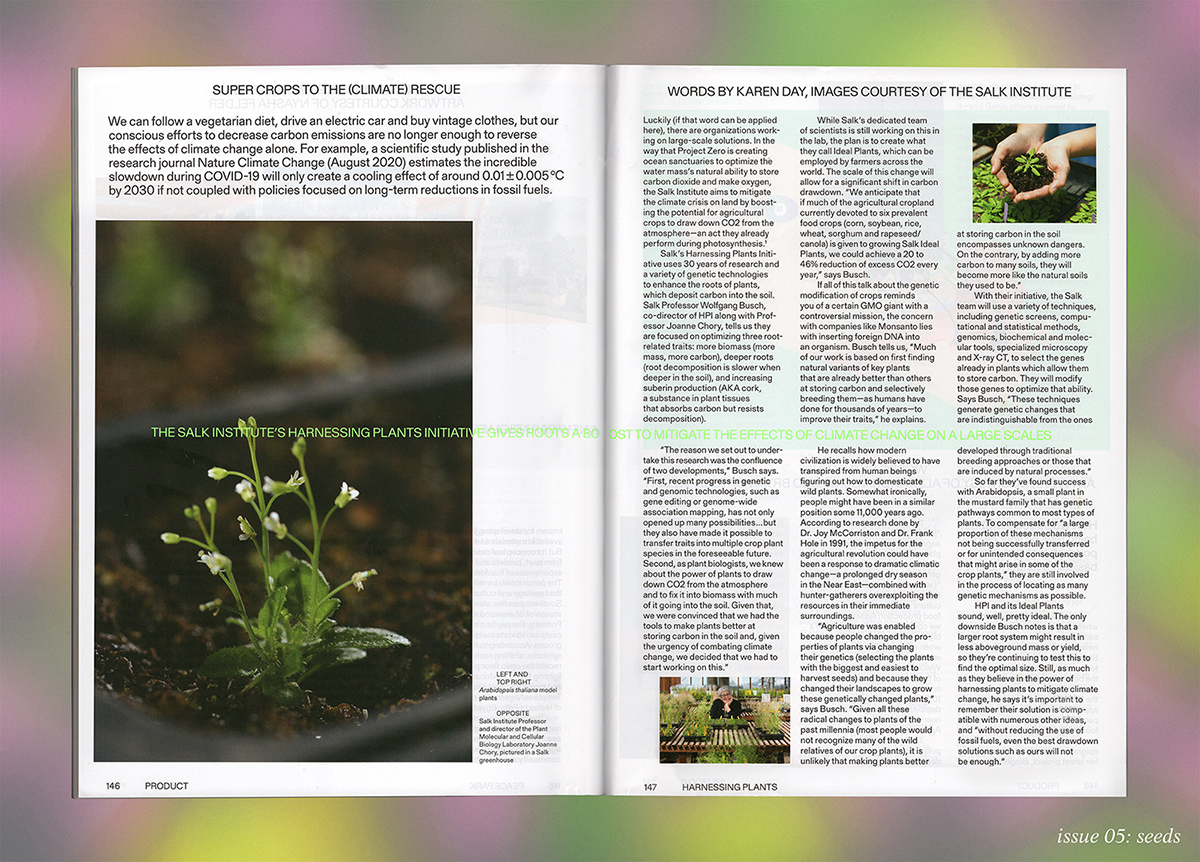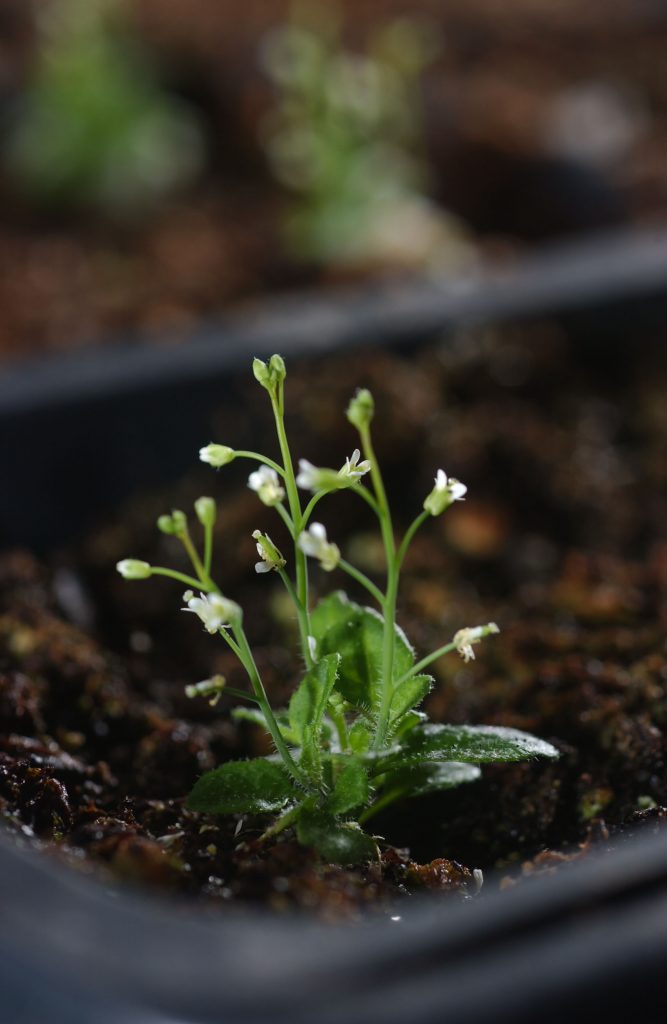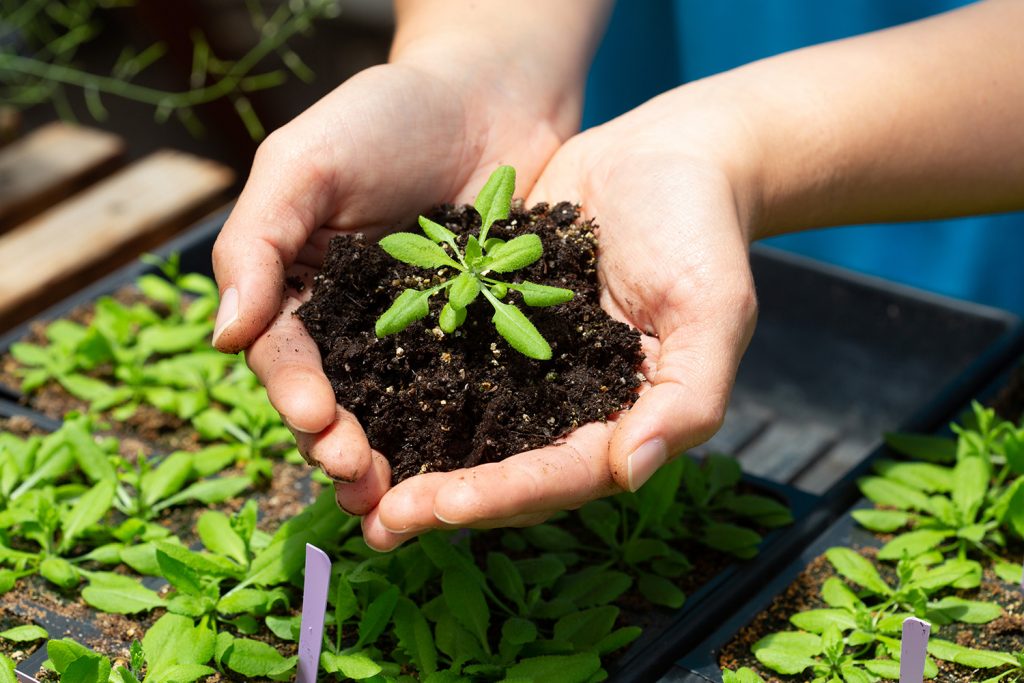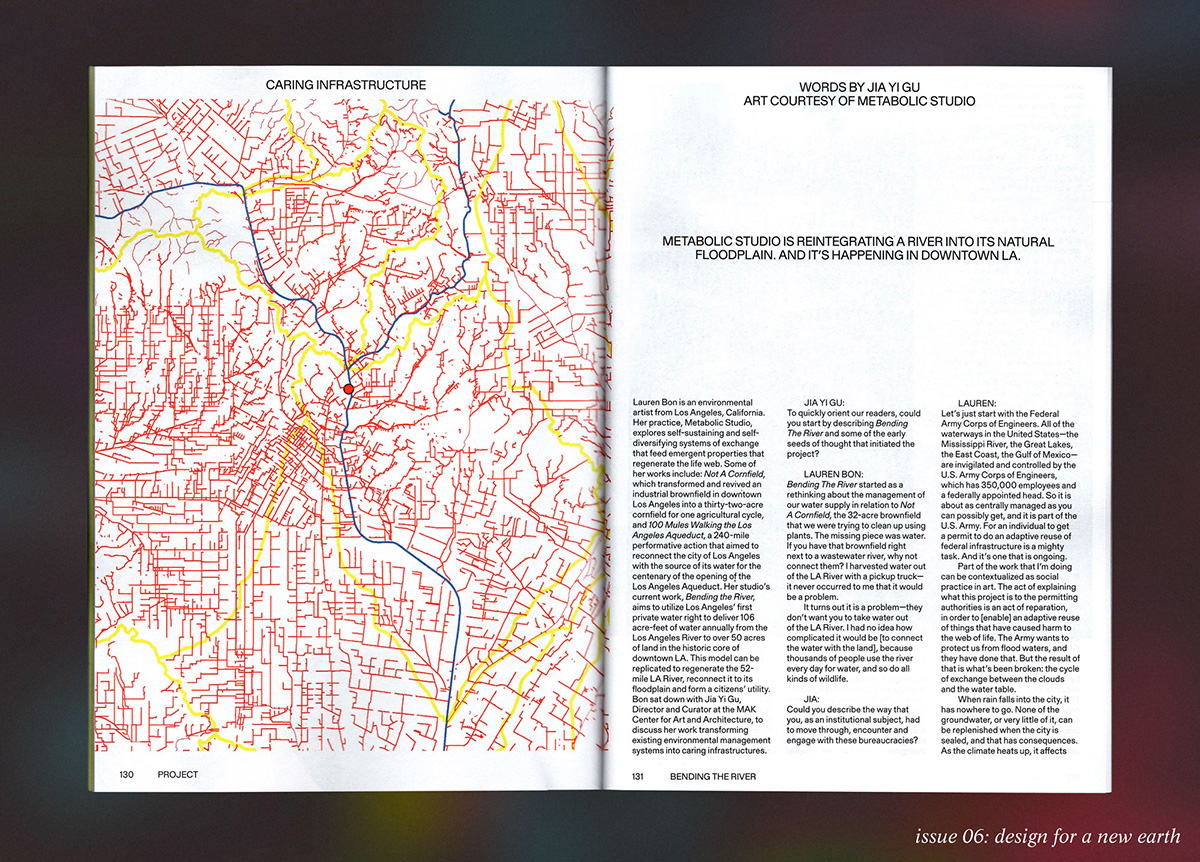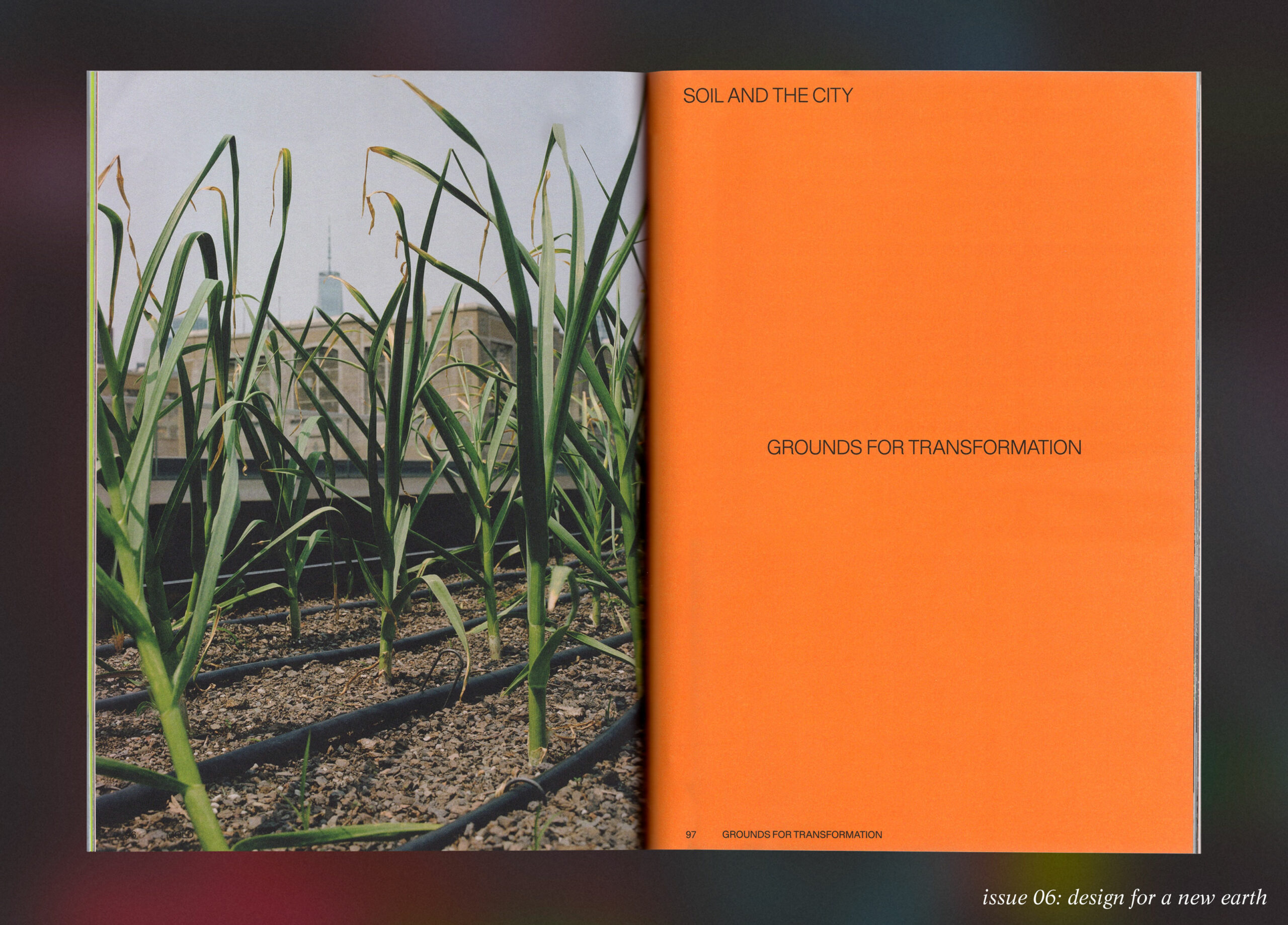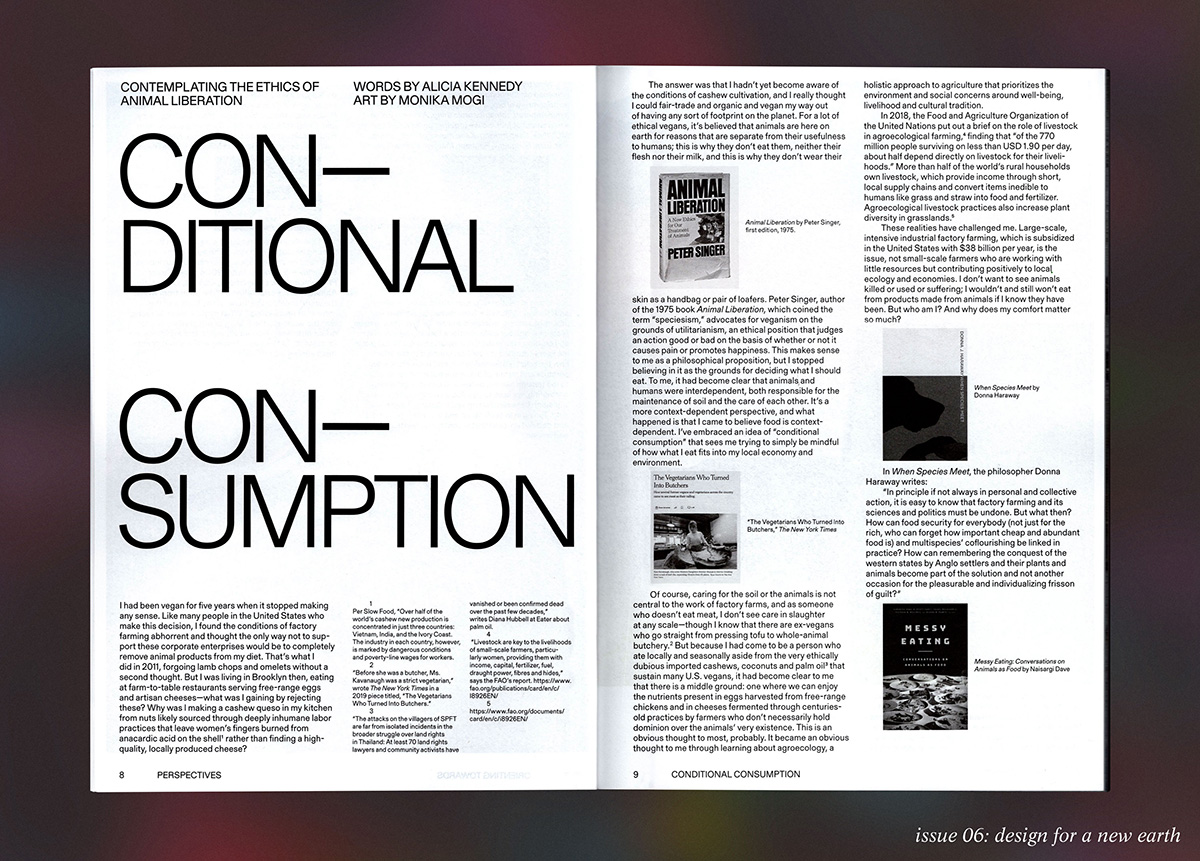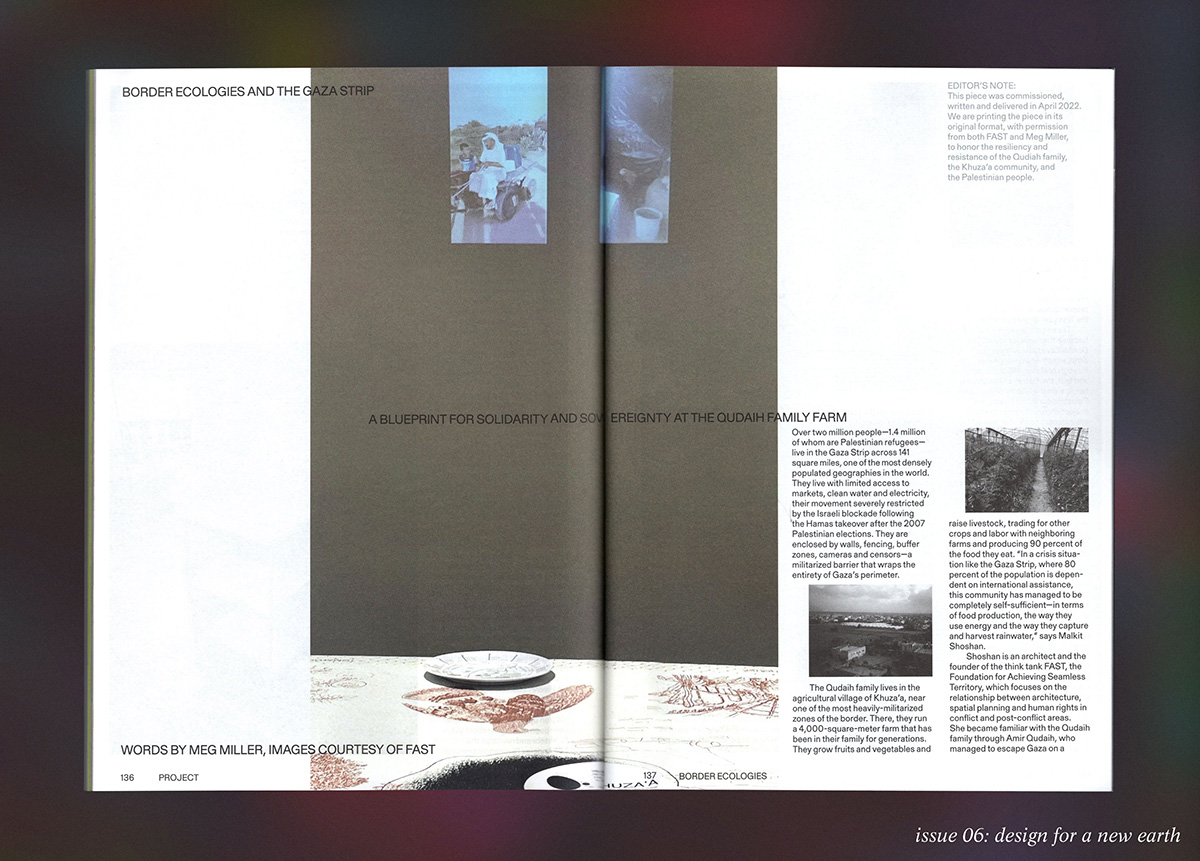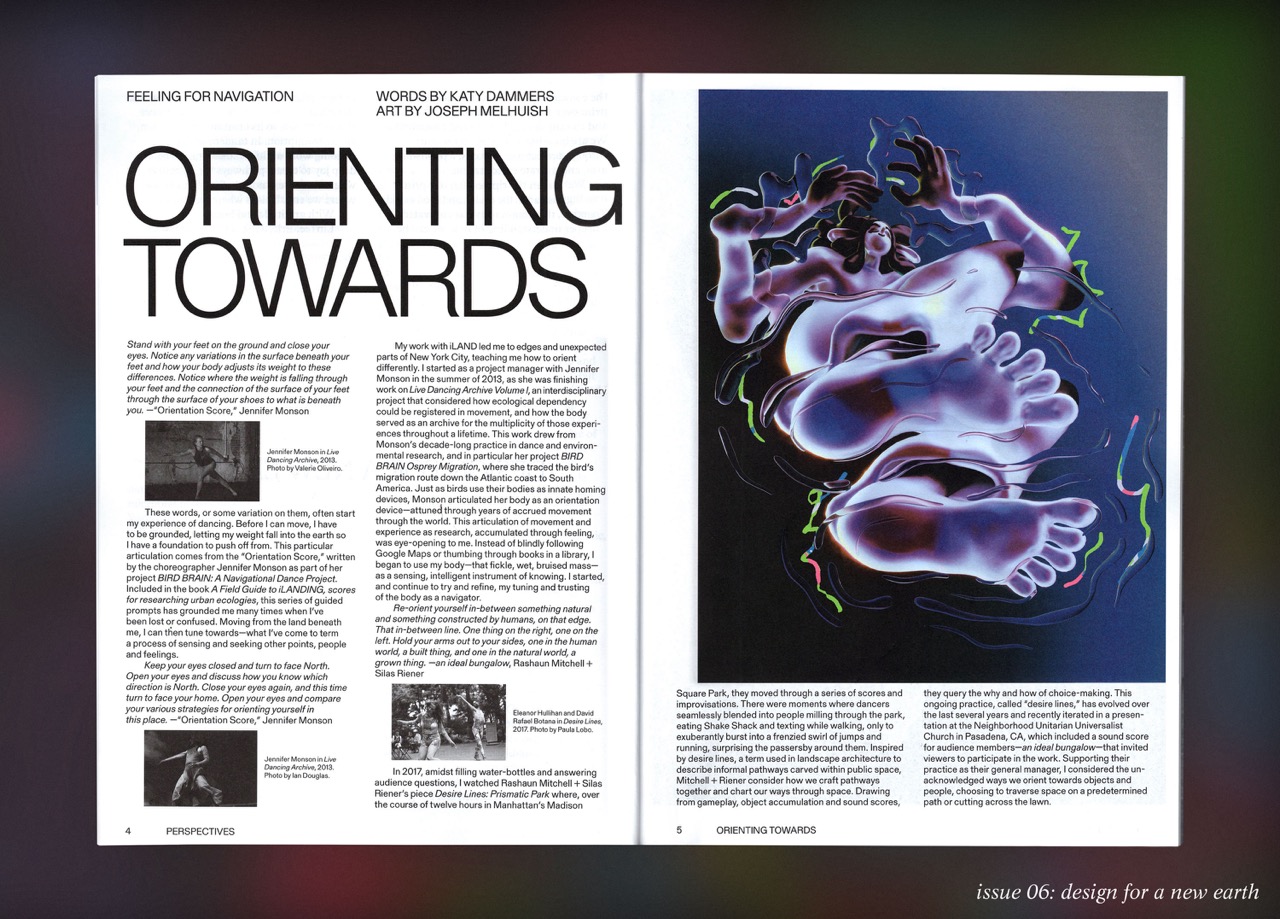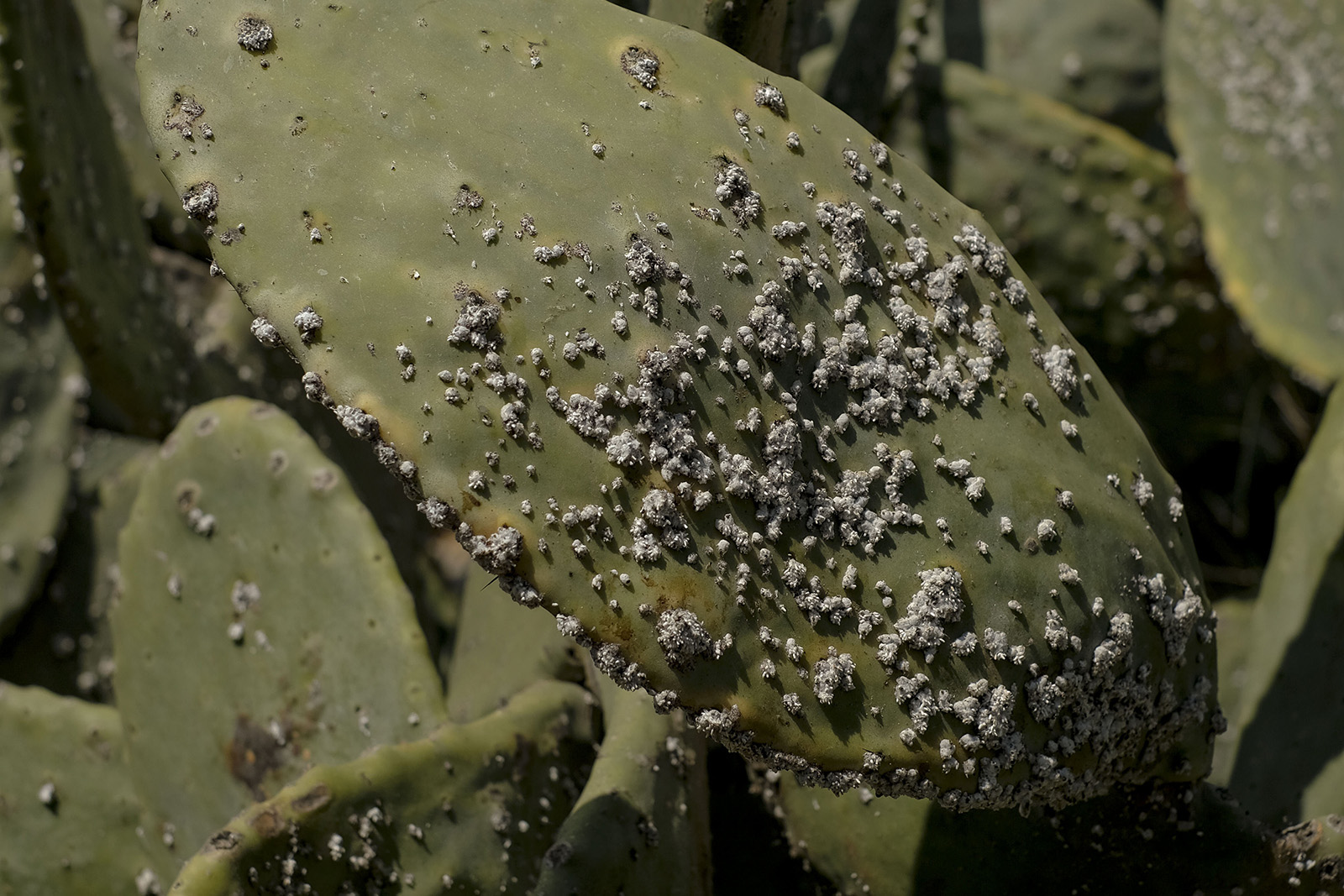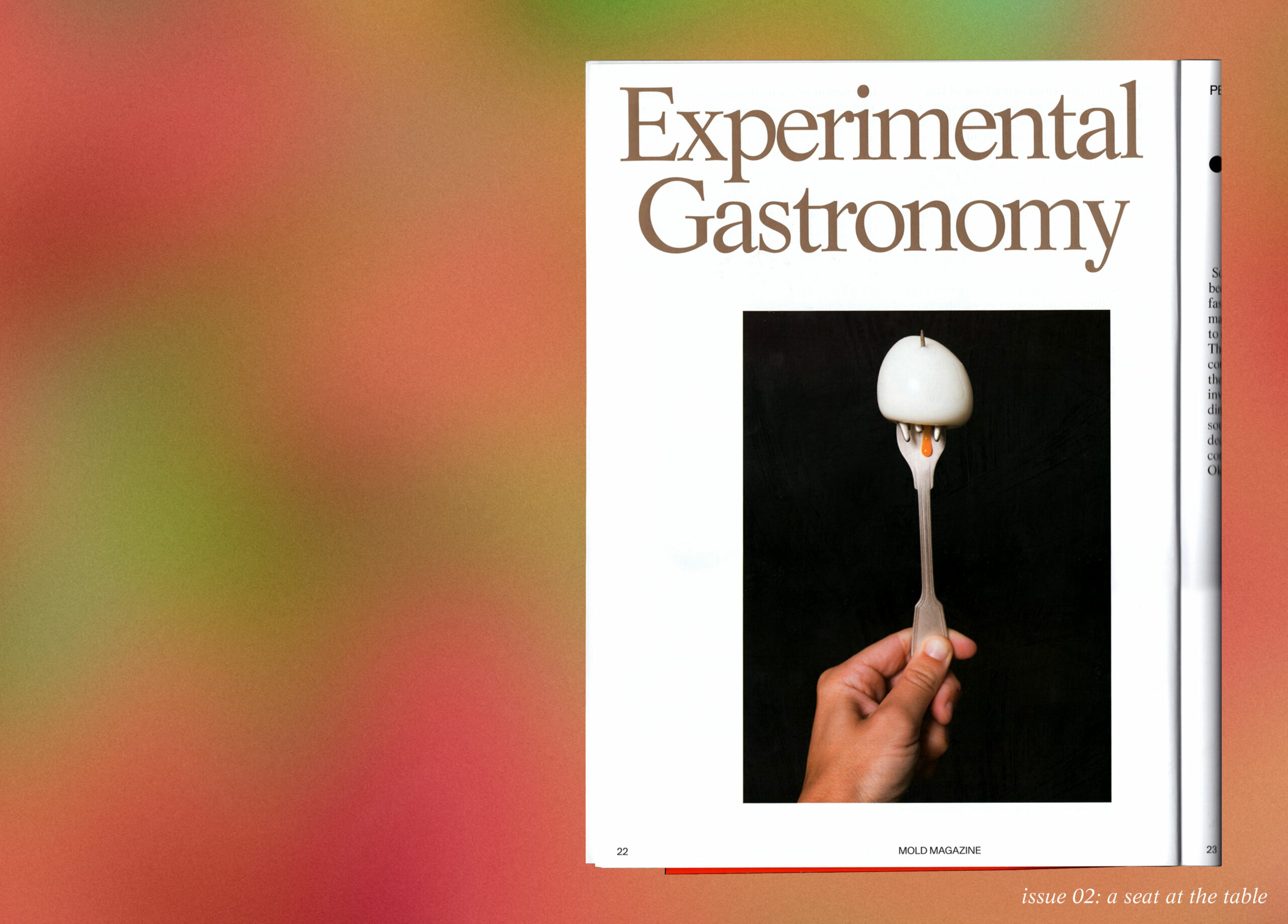Pre-order your copy of SEEDS, MOLD Magazine Issue 05 here for a pre-order price of $18USD. Expected ship date is March 22.
We can follow a vegetarian diet, drive an electric car and buy vintage clothes, but our conscious efforts to decrease carbon emissions are no longer enough to reverse the effects of climate change alone. For example, a scientific study published in the research journal Nature Climate Change (August 2020) estimates the incredible slowdown during COVID-19 will only create a cooling effect of around 0.01 ± 0.005 °C by 2030 if not coupled with policies focused on long-term reductions in fossil fuels.
Luckily (if that word can be applied here), there are organizations working on large-scale solutions. In the way that Project Zero is creating ocean sanctuaries to optimize the water mass’s natural ability to store carbon dioxide and make oxygen, the Salk Institute aims to mitigate the climate crisis on land by boosting the potential for agricultural crops to draw down CO2 from the atmosphere—an act they already perform during photosynthesis.
Salk’s Harnessing Plants Initiative uses 30 years of research and a variety of genetic technologies to enhance the roots of plants, which deposit carbon into the soil. Salk Professor Wolfgang Busch, co-director of HPI along with Professor Joanne Chory, tells us they are focused on optimizing three root-related traits: more biomass (more mass, more carbon), deeper roots (root decomposition is slower when deeper in the soil), and increasing suberin production (AKA cork, a substance in plant tissues that absorbs carbon but resists decomposition).
“The reason we set out to undertake this research was the confluence of two developments,” Busch says. “First, recent progress in genetic and genomic technologies, such as gene editing or genome-wide association mapping, has not only opened up many possibilities…but they also have made it possible to transfer traits into multiple crop plant species in the foreseeable future. Second, as plant biologists, we knew about the power of plants to draw down CO2 from the atmosphere and to fix it into biomass with much of it going into the soil. Given that, we were convinced that we had the tools to make plants better at storing carbon in the soil and, given the urgency of combating climate change, we decided that we had to start working on this.”
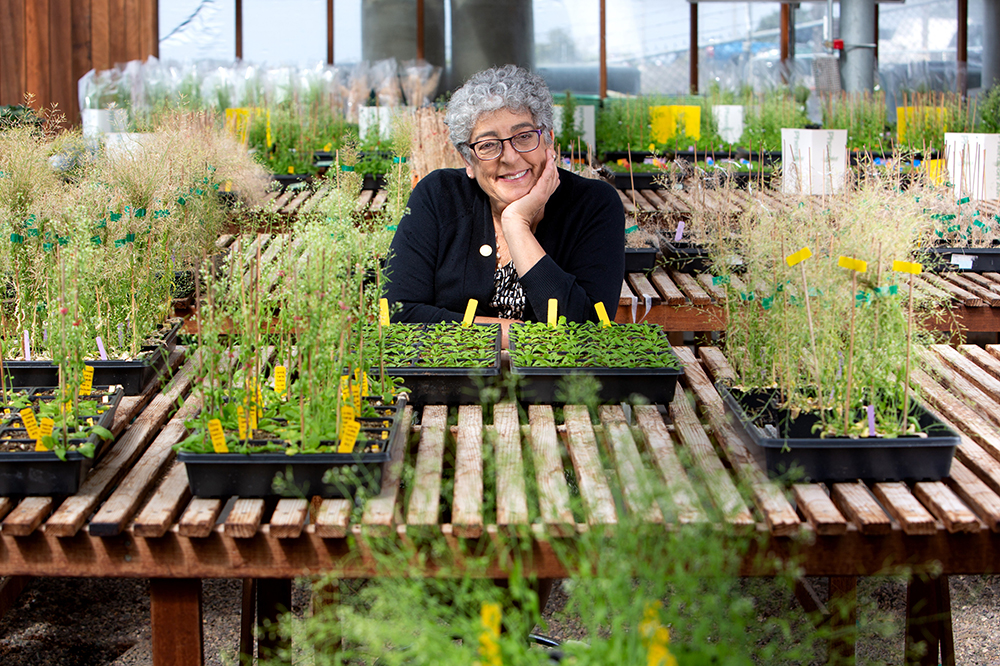
While Salk’s dedicated team of scientists is still working on this in the lab, the plan is to create what they call Ideal Plants, which can be employed by farmers across the world. The scale of this change will allow for a significant shift in carbon drawdown. “We anticipate that if much of the agricultural cropland currently devoted to six prevalent food crops (corn, soybean, rice, wheat, sorghum and rapeseed/canola) is given to growing Salk Ideal Plants, we could achieve a 20 to 46% reduction of excess CO2 every year,” says Busch.
If all of this talk about the genetic modification of crops reminds you of a certain GMO giant with a controversial mission, the concern with companies like Monsanto lies with inserting foreign DNA into an organism. Busch tells us, “Much of our work is based on first finding natural variants of key plants that are already better than others at storing carbon and selectively breeding them—as humans have done for thousands of years—to improve their traits,” he explains.
He recalls how modern civilization is widely believed to have transpired from human beings figuring out how to domesticate wild plants. Somewhat ironically, people might have been in a similar position some 11,000 years ago. According to research done by Dr. Joy McCorriston and Dr. Frank Hole in 1991, the impetus for the agricultural revolution could have been a response to dramatic climatic change—a prolonged dry season in the Near East—combined with hunter-gatherers overexploiting the resources in their immediate surroundings.
“Agriculture was enabled because people changed the properties of plants via changing their genetics (selecting the plants with the biggest and easiest to harvest seeds) and because they changed their landscapes to grow these genetically changed plants,” says Busch. “Given all these radical changes to plants of the past millennia (most people would not recognize many of the wild relatives of our crop plants), it is unlikely that making plants better at storing carbon in the soil encompasses unknown dangers. On the contrary, by adding more carbon to many soils, they will become more like the natural soils they used to be.”
With their initiative, the Salk team will use a variety of techniques, including genetic screens, computational and statistical methods, genomics, biochemical and molecular tools, specialized microscopy and X-ray CT, to select the genes already in plants which allow them to store carbon. They will modify those genes to optimize that ability. Says Busch, “These techniques generate genetic changes that are indistinguishable from the ones developed through traditional breeding approaches or those that are induced by natural processes.”
So far they’ve found success with Arabidopsis, a small plant in the mustard family that has genetic pathways common to most types of plants. To compensate for “a large proportion of these mechanisms not being successfully transferred or for unintended consequences that might arise in some of the crop plants,” they are still involved in the process of locating as many genetic mechanisms as possible.
HPI and its Ideal Plants sound, well, pretty ideal. The only downside Busch notes is that a larger root system might result in less aboveground mass or yield, so they’re continuing to test this to find the optimal size. Still, as much as they believe in the power of harnessing plants to mitigate climate change, he says it’s important to remember their solution is compatible with numerous other ideas, and “without reducing the use of fossil fuels, even the best drawdown solutions such as ours will not be enough.”
